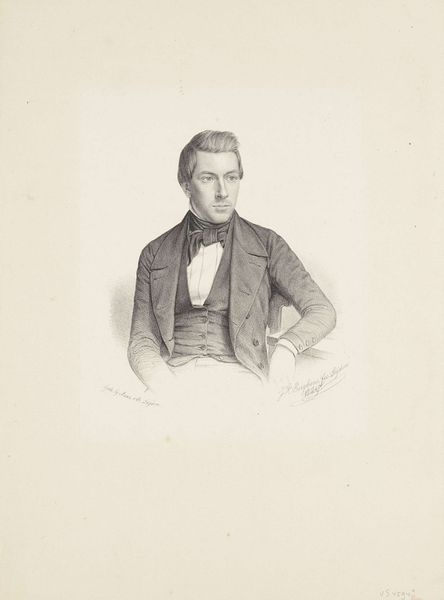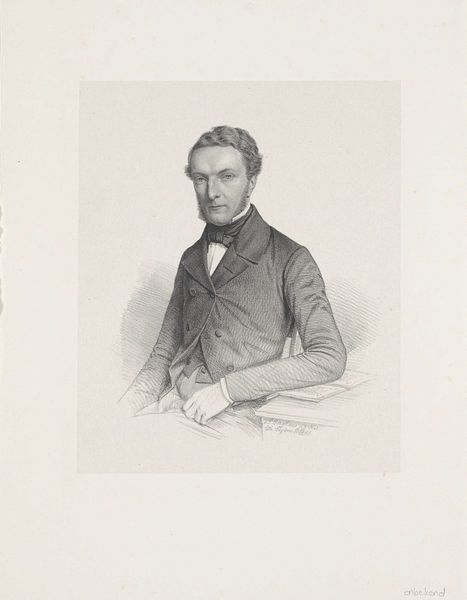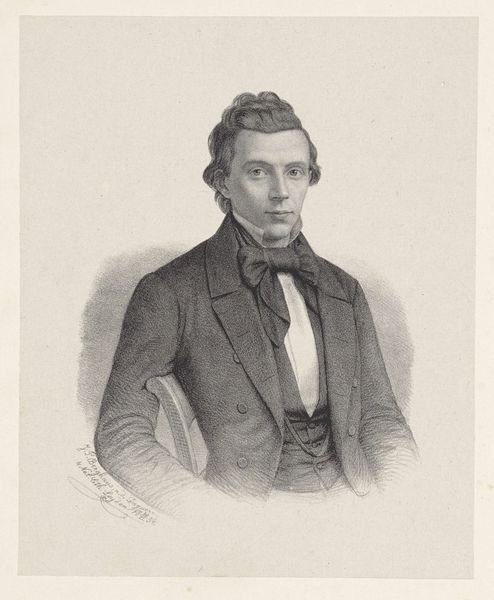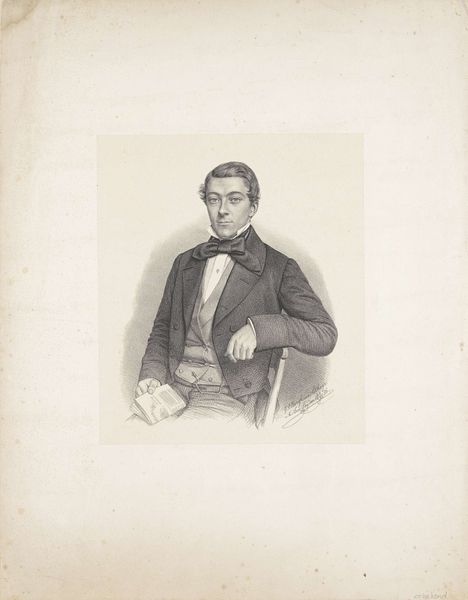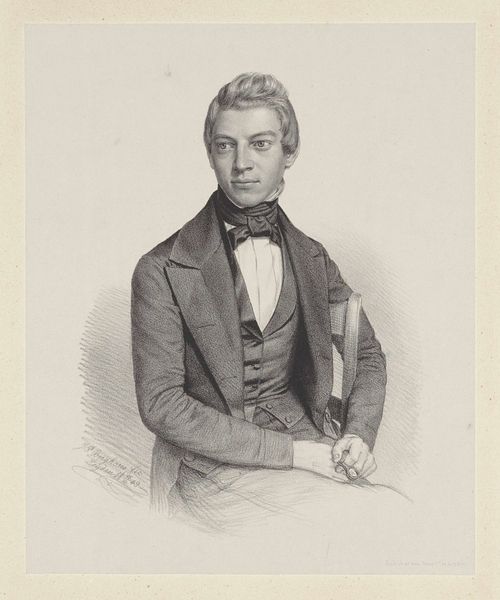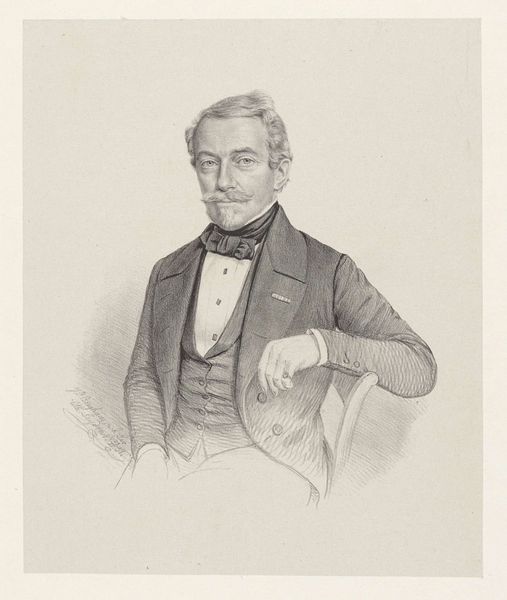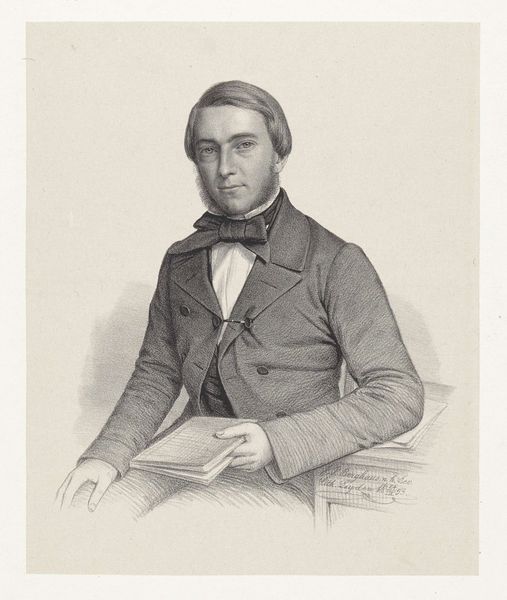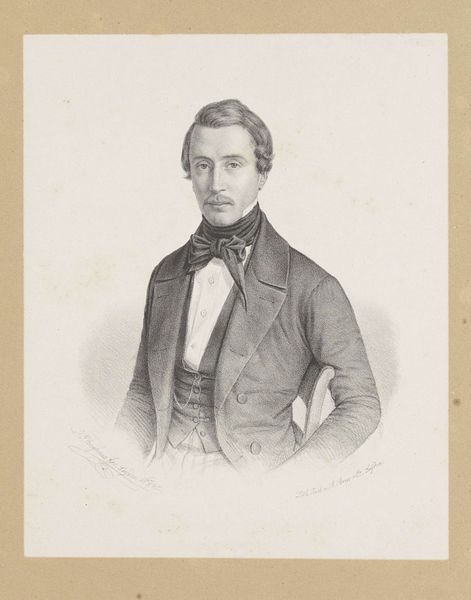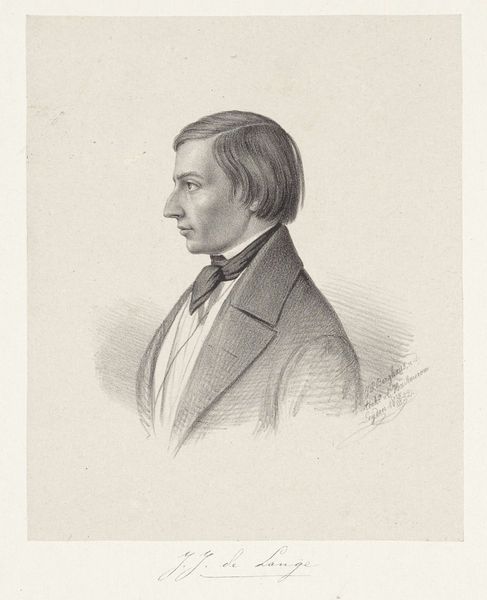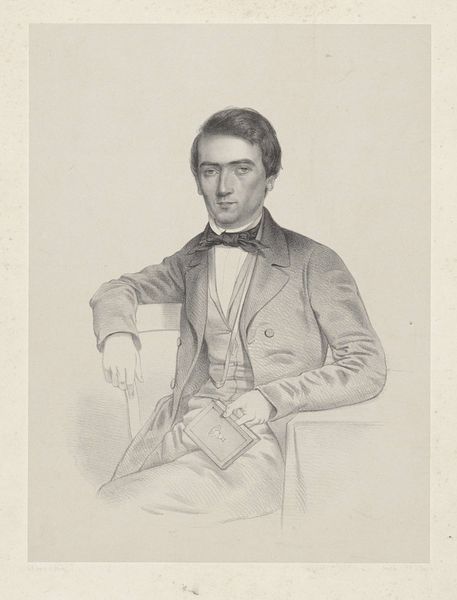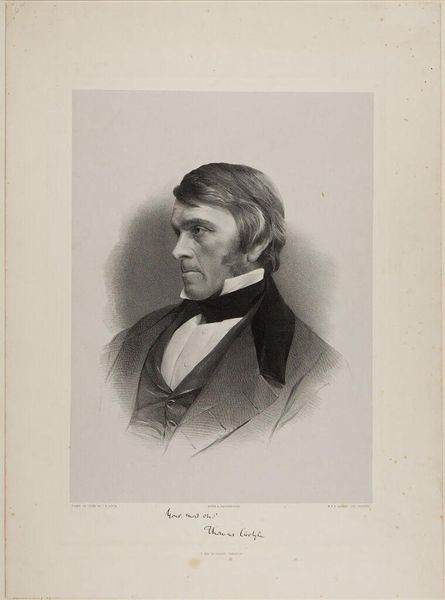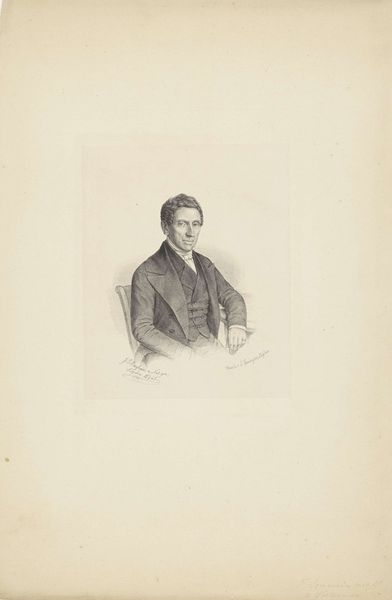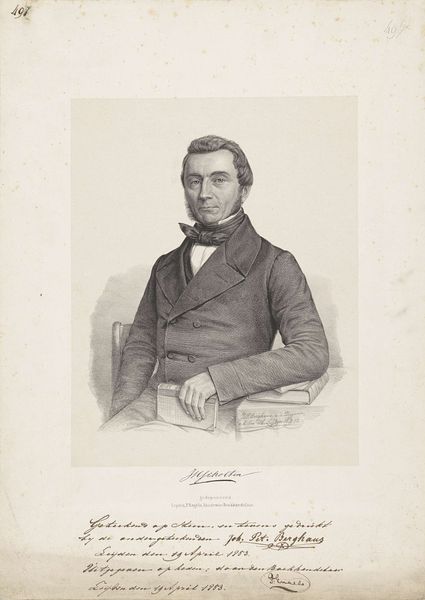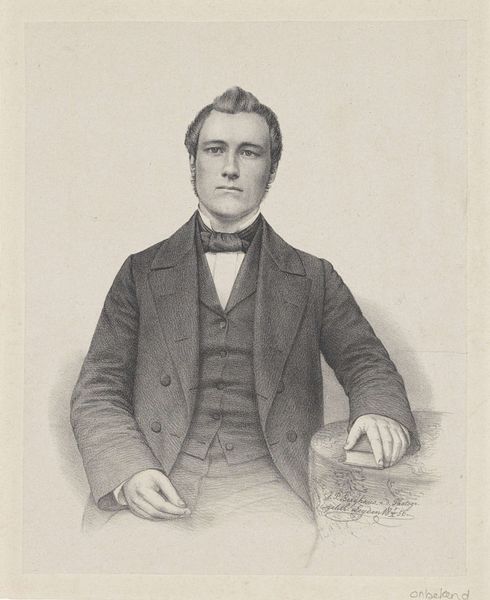
drawing, pencil
#
pencil drawn
#
drawing
#
caricature
#
pencil drawing
#
pencil
#
portrait drawing
#
academic-art
#
realism
Dimensions: height 360 mm, width 275 mm
Copyright: Rijks Museum: Open Domain
Curator: Here at the Rijksmuseum, we have a striking pencil drawing, "Portret van H. Jacometti," potentially from the period between 1852 and 1858, crafted by Johann Peter Berghaus. What strikes you first about this piece? Editor: There's a quiet formality to it. The subject seems carefully composed, gazing off to the side. I’m drawn to the way the artist uses subtle shading to create such a detailed likeness. It's a rather dignified portrayal, isn't it? Curator: Indeed. In the context of 19th-century portraiture, works like this were often commissioned by the sitter or their family to project a particular image of respectability and status within a rapidly changing society. Note the fashionable attire and carefully rendered features. This suggests an attempt to capture not just likeness but social standing. Editor: And how does that sit within the larger visual culture of the era? The pursuit of realism feels…intentional, like a way to solidify someone’s presence in a world of shifting identities. I wonder how the rise of photography influenced the perceived need for these meticulously crafted drawings. Was it about preserving memory, cementing social position, or something else entirely? Curator: That's a crucial question. Photography certainly played a role, challenging the perceived value of hand-drawn portraits. Pencil drawings like this became less about simple representation and more about artistic skill and intimate connection. The touch of the artist’s hand, made visible through the varying pressure of the pencil, creates a sense of immediacy that perhaps photography couldn't quite capture then. The realism places emphasis on bourgeois values of the era. Editor: It’s a very masculine image. What is absent here is any visual reference that might represent some feminine virtues. But Berghaus seems aware of contemporary values. It is such a specific historical moment being captured here. I wonder if Jacometti himself had a clear understanding of how he was visually situated. Curator: He must have. The very act of commissioning a portrait, regardless of the medium, was a deliberate performance of selfhood. The portrait suggests not just individual identity but a place within a broader social structure. Editor: Thanks for helping to unravel some of the cultural context that has framed our experience of this remarkable portrait. Curator: The pleasure was mine. Considering how portraiture reflected and shaped societal values then opens up fascinating perspectives on portraiture's continuing roles in our own time.
Comments
No comments
Be the first to comment and join the conversation on the ultimate creative platform.
